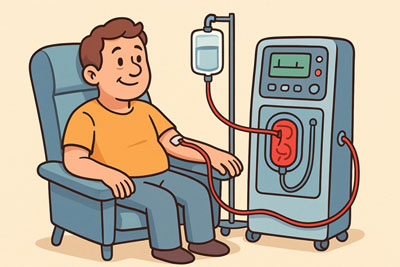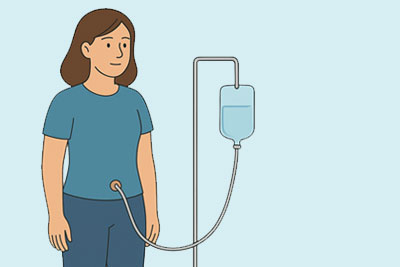Different Types of Dialysis
Hemodialysis (HD)
Hemodialysis uses a special machine to clean your blood. To do this, your doctor needs to create an access to your blood—either through a soft tube called a catheter or a connection made in your arm called a fistula (or sometimes a graft). The dialysis machine takes a small amount of blood out at a time, passes it through a filter to remove waste and extra water, and then safely returns the clean blood back to your body.
- In-center hemodialysis: You come to a dialysis center, usually 3 times a week. A machine cleans your blood while you relax in a chair. Nurses and technicians monitor you during the treatment.
- Home hemodialysis: Some patients may do dialysis at home. With special training and equipment, you can dialyze more often or at times that fit your schedule. This can give you more flexibility and independence.
Peritoneal Dialysis (PD)
This treatment uses the lining of your belly (the peritoneum) as a natural filter. A soft tube (catheter) is placed in your abdomen, and a special fluid is used to absorb waste and extra fluid. You can do this at home, either during the day or overnight while you sleep.
Your doctor and care team will discuss which option may be best for you, based on your lifestyle, health, and personal preferences.

